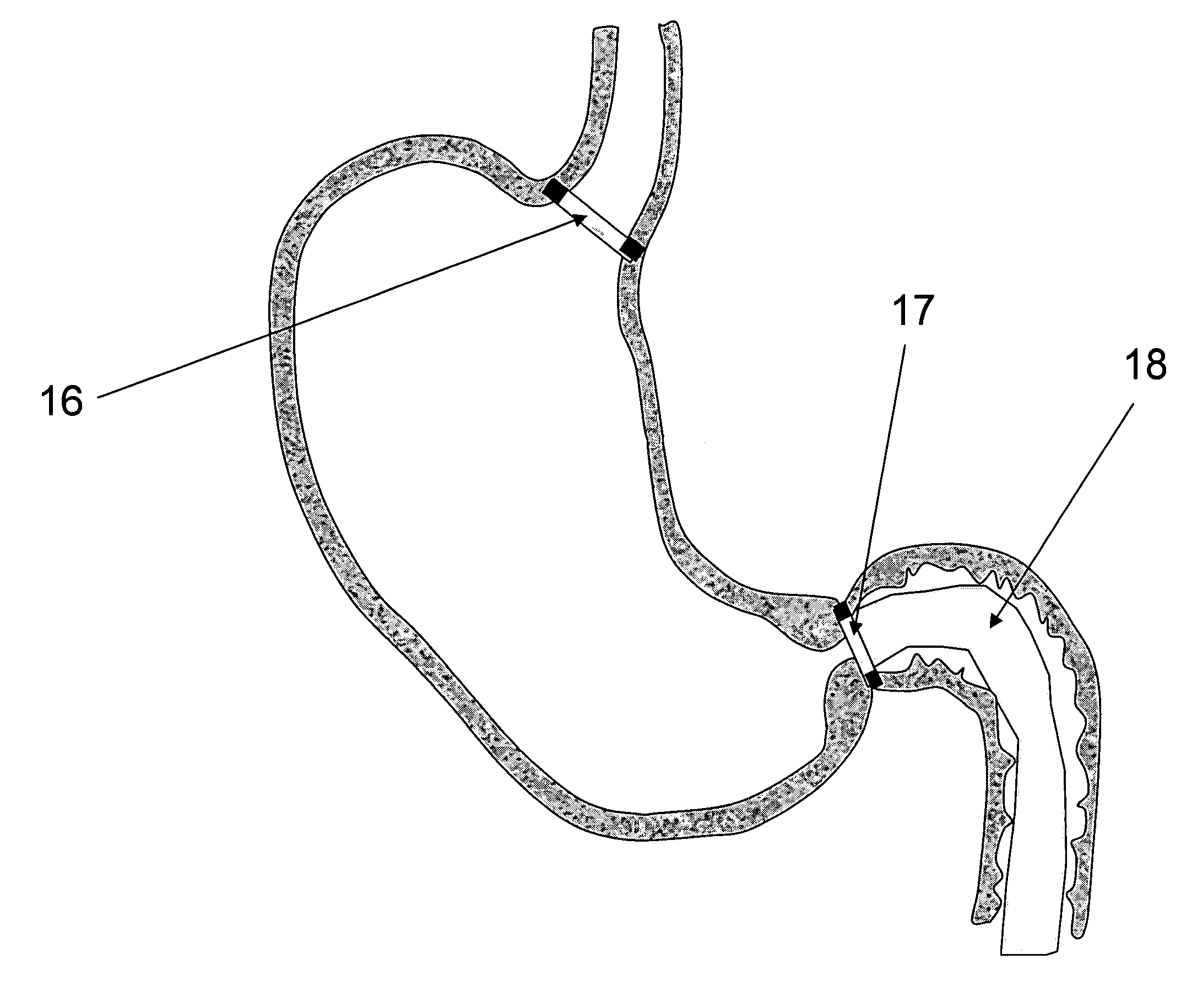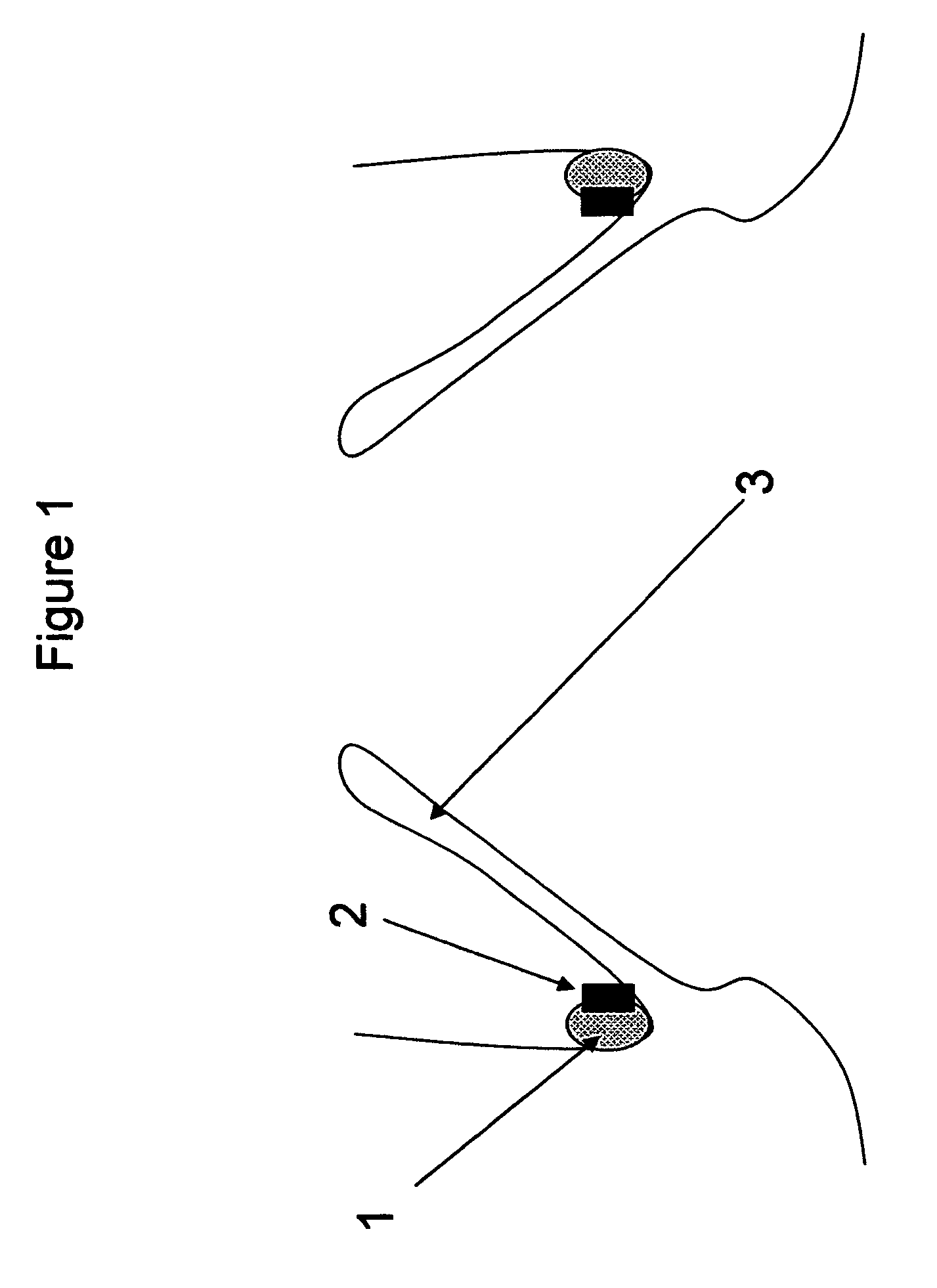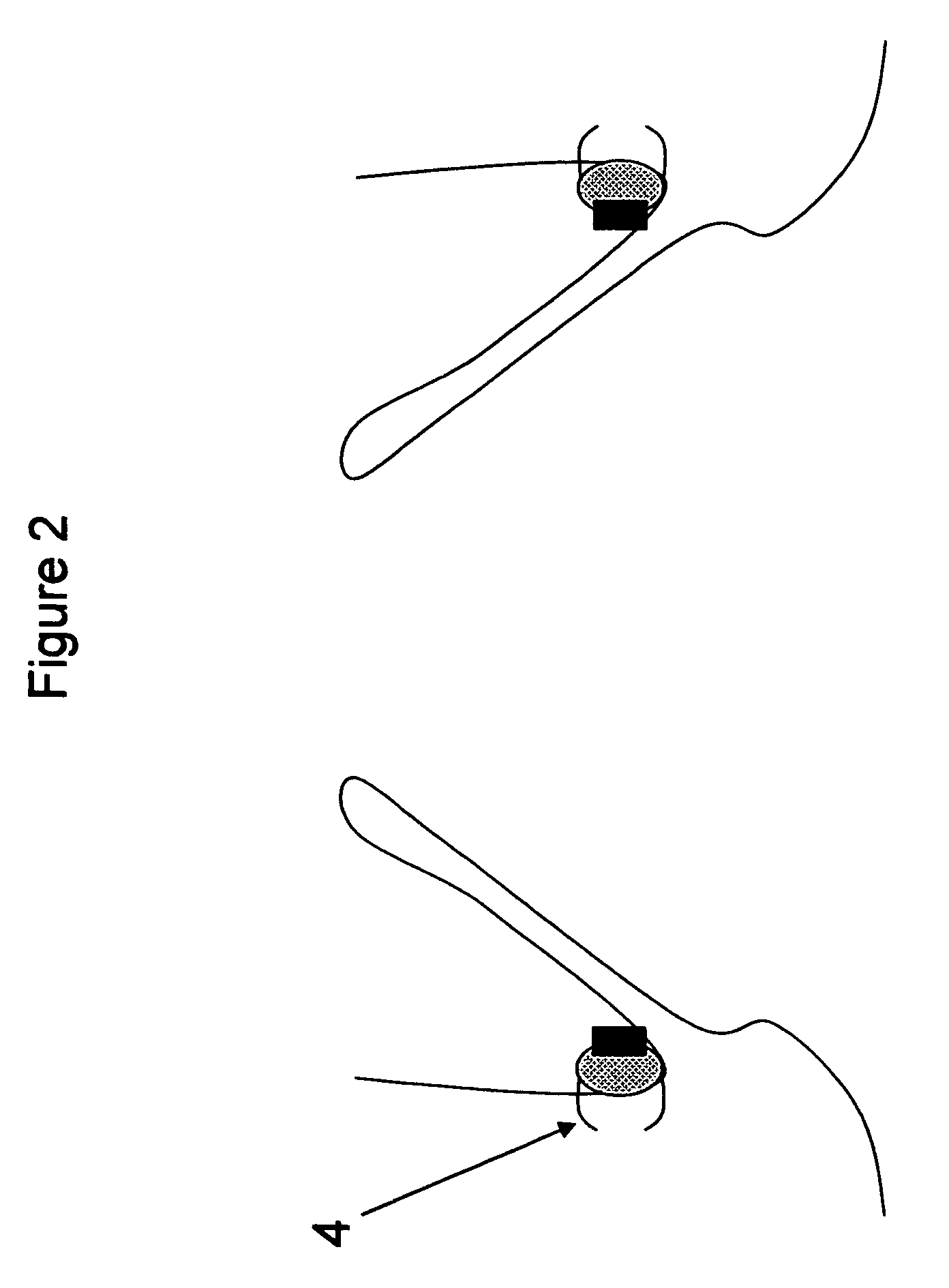Method and apparatus for anchoring implants
a technology of anchoring and implants, applied in the field of medical devices, can solve the problems of ineffective anchoring mechanisms at the time of anchoring device placement, and achieve the effects of reducing the overall footprint of the implanted device, reducing the risk of migration, and reducing the invasiveness
- Summary
- Abstract
- Description
- Claims
- Application Information
AI Technical Summary
Benefits of technology
Problems solved by technology
Method used
Image
Examples
Embodiment Construction
[0026]FIG. 1—This illustration represents the deployed anchoring element placed in the aortic valve region. As can be seen from the illustration, the anchoring element consists solely of a material to promote fibrotic ingrowth 1 and the attachment ring 2 designed to engage the aortic valve device. In this case, the device is deployed above the native aortic valve 3.
[0027]FIG. 2—This illustration represents the deployed anchoring element again placed in the aortic valve region but this time with clips to secure the anchoring element to the aorta. As can be seen from the illustration, the anchoring element consists of a material to promote fibrotic ingrowth 1, the attachment ring 2 designed to engage the aortic valve device and clips, staples, etc 4 for the attachment of the anchoring element to the aortic tissues. In this case, the device is deployed above the native aortic valve.
[0028]FIG. 3—This illustration represents the deployed anchoring element again placed in the aortic valve...
PUM
 Login to View More
Login to View More Abstract
Description
Claims
Application Information
 Login to View More
Login to View More - R&D
- Intellectual Property
- Life Sciences
- Materials
- Tech Scout
- Unparalleled Data Quality
- Higher Quality Content
- 60% Fewer Hallucinations
Browse by: Latest US Patents, China's latest patents, Technical Efficacy Thesaurus, Application Domain, Technology Topic, Popular Technical Reports.
© 2025 PatSnap. All rights reserved.Legal|Privacy policy|Modern Slavery Act Transparency Statement|Sitemap|About US| Contact US: help@patsnap.com



